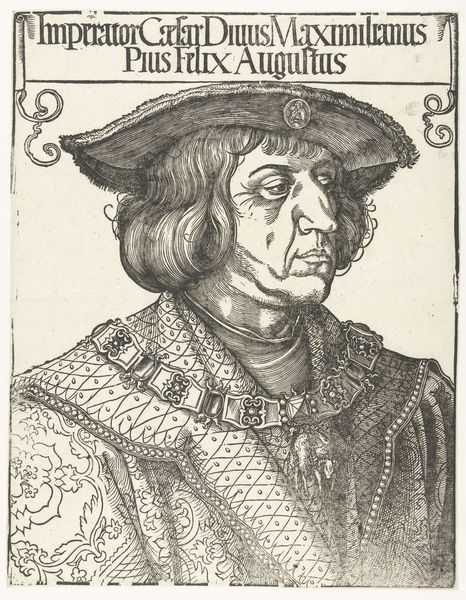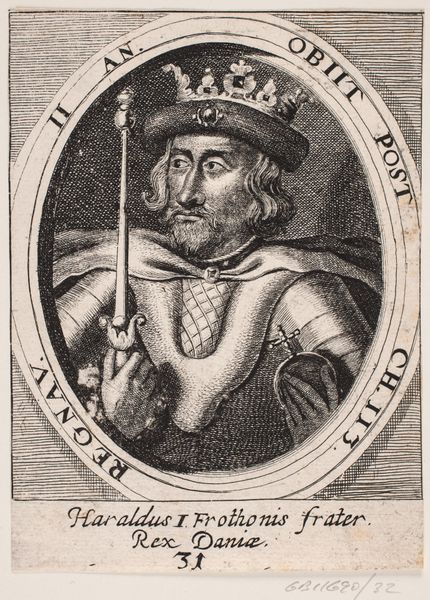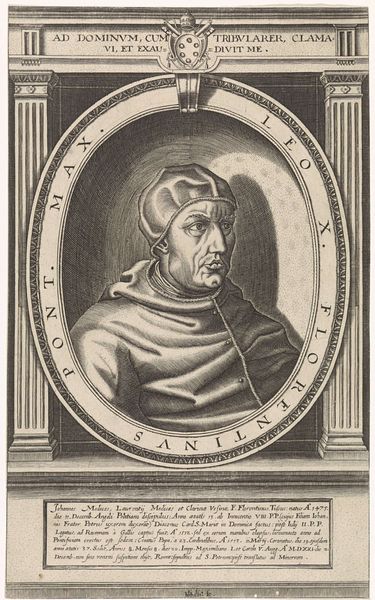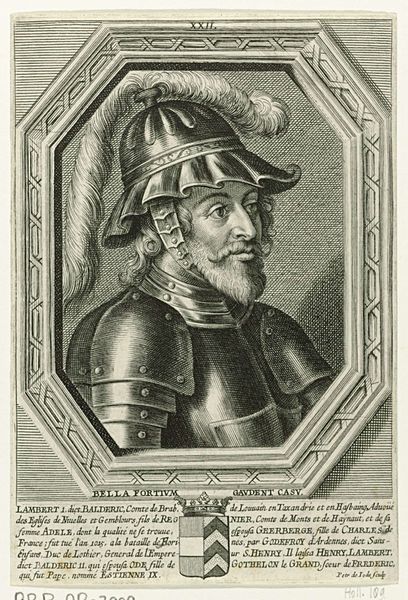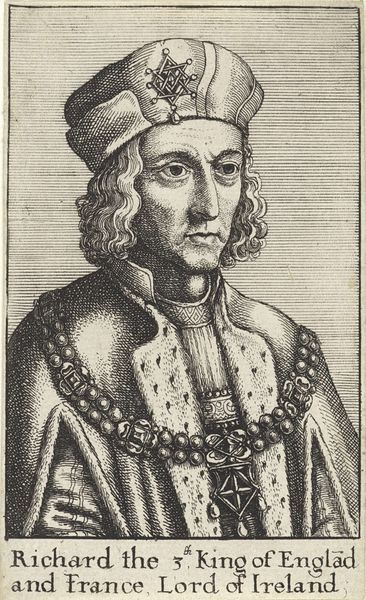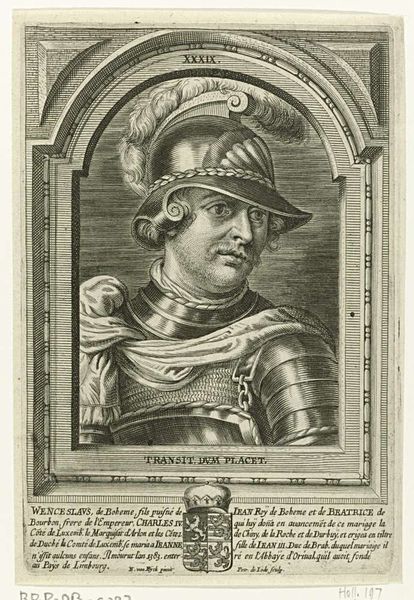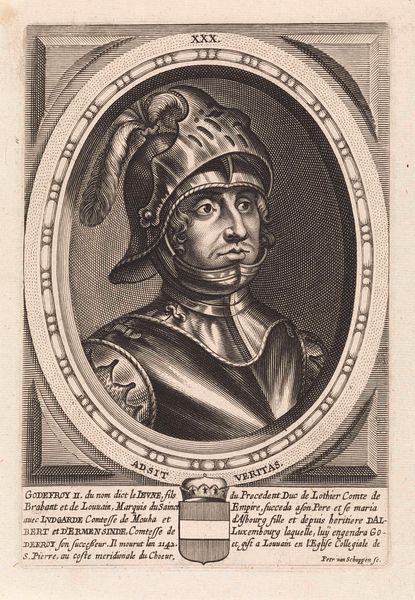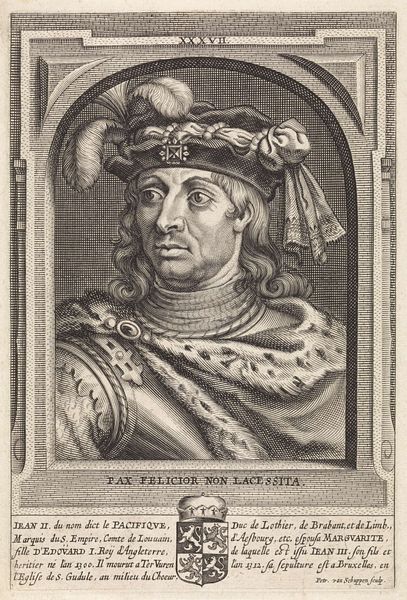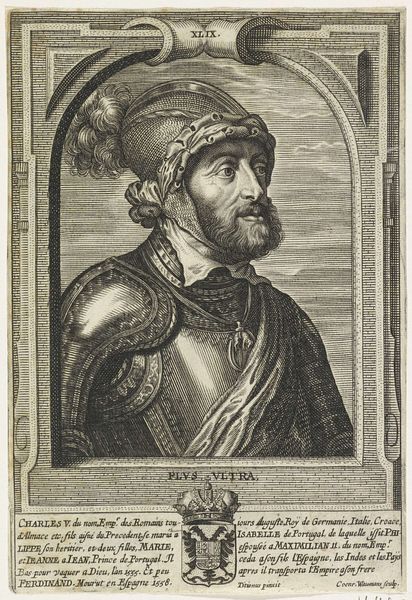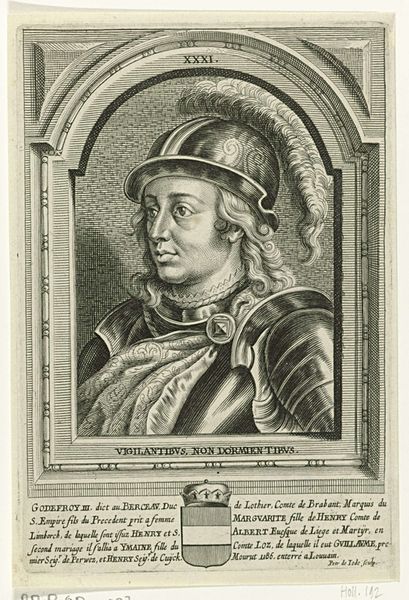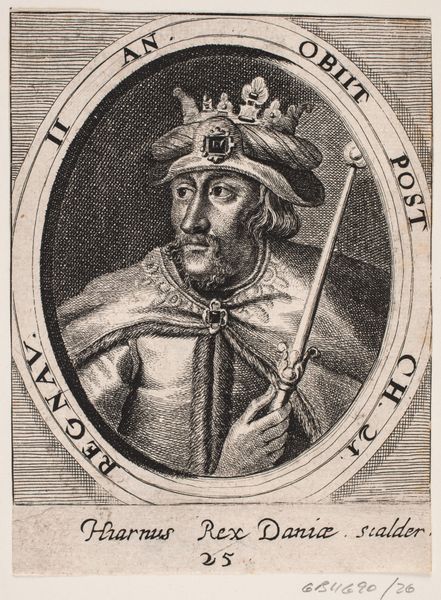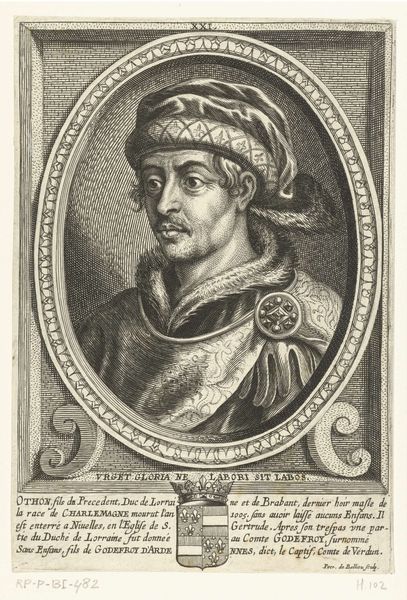
engraving
#
portrait
#
baroque
#
history-painting
#
engraving
Dimensions: height 175 mm, width 119 mm
Copyright: Rijks Museum: Open Domain
Editor: Here we have Coenraet Waumans' 1662 engraving, "Portret van Pepijn (II) van Herstal", from the Rijksmuseum collection. The details in the armour and the figure's facial expression are striking. It almost feels like a promotional image designed to convey power. What do you see in this piece beyond the immediate impression? Curator: The first thing I notice is how the portrait operates within the established conventions of power and representation in the 17th century. Engravings like this circulated widely, shaping public perception. Who do you think commissioned this? Editor: Possibly Pepijn's descendants, seeking to legitimise their lineage? The text emphasizes his noble titles. Curator: Precisely! It's interesting to consider the political motivations. Notice how the image presents him? It is not necessarily about strict factual accuracy, but a constructed image designed to convey authority. The very act of creating and distributing his image served a socio-political function. Editor: It's more about branding than accuracy, a bit like political posters today. Curator: An astute observation. How might the display of portraits like these in homes or public spaces shape societal values and hierarchies? What kind of audience was meant to see them, and what effect were they designed to have? Editor: I never really thought about art as political propaganda! Curator: Well, the past and present are full of art as part of social constructs and power. Editor: Thanks, I definitely see more of how social and cultural influences contributed to this portrait's meaning now. It gives you a lot to think about!
Comments
No comments
Be the first to comment and join the conversation on the ultimate creative platform.
